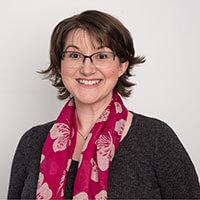What Are Critical Success Factors?
Critical success factors (CSF) are activities you do to meet stated business or project goals for improved competitive performance. Organizations of every type, for-profit and nonprofit, use CSFs to decide what to focus on to yield desired results.
“Critical success factors came into use in the 1960s as an executive tool to track corporate performance,” explains Alan Zucker, author and Principal of Project Management Essentials, LLC. “Critical success factors distill corporate data to the essential items for the organization’s success.”
Zucker notes that project managers (PMs) combine strategy-focused measures with critical success factors. Key success factors (KSFs) state the essential elements required for a company to compete in its target markets. Objectives and key results (OKRs) are a framework to define measurable goals and track outcomes. Quantifiable measures known as key performance indicators (KPIs) help evaluate the success of an organization.
How does success look? Examples of critical success factor-driven, strategically based projects deliver within the specified timeframe and budget. The team has fulfilled the criteria and met agreed-upon metrics, and company workflows and corporate culture have remained stable.
What Are Critical Success Factors in Project Management?
Critical success factors in project management are variable activities and attributes. Project managers use critical success factors to meet company goals as they relate to assigned deliverables. Managers will monitor the factors against agreed-upon metrics.
A 2012 research study, "Critical Success Factors in Projects," by Pinto, Slevin, and Prescott, cites experts who stress that project management isn’t just a tactical function. Diligent project planning and management of critical success factors support organizational strategy, generate value overall, and make project management a strategic component of corporate well-being.
Why Do We Need to Identify Critical Success Factors in a Project?
Identifying critical success factors is part of effective project management. Organizing projects to support identified critical success factors make for positive outcomes based on thoughtful consideration. Successful implementations positively influence short-, medium-, and long-term profitability and a company’s competitive advantage.
Jon M. Quigley, Principal and Founding Member of Value Transformation, notes that critical success factors clarify a project's value to the organization and how to manage and evaluate projects after completion. “A project that meets schedule and budget but delivers an output that does not meet stated critical success factors is the same as a failure,” notes Quigley. “All projects are subject to constraints and trade-offs while in the planning stages and in process. Without knowing the quantifiable outcome, decisions made during the project aren’t likely to help you hit a target you don’t understand or even know.”
Critical success factors drive multiple benefits, including the following:
- Reduced Action Bias: “Defining clear critical success factors reduces the risk of action bias — the tendency to favor action over inaction,” Zucker from Project Management Essentials explains. “Executives and project managers may leap too quickly from ‘we have a problem’ to ‘here is the solution; let’s go!’ without considering all the ramifications. Taking time to identify and assess critical success factors puts on the brakes and makes for a more thoughtful approach to any potential project's value.”
- Greater Competitive Edge: A 2014 research study by Zawawi, Yusof, and Aris, “Determining Critical Success Factors of Project Management Practice: A Conceptual Framework,” reveals a crucial overall benefit. The study finds that “[d]etermining critical success factors will give the organization/company a competitive edge and is the bottom line of success in fulfilling the responsibility of a project management company. This, in turn, will give rise to satisfied investors and professional bodies and make the project management company prosper.”
- Control and Accountability: Critical success factor best practices dictate clear reporting of every aspect of a project, full support of agreed-upon criteria by all stakeholders, and a project manager with overall control and ultimate accountability. Reporting on an ongoing basis and providing transparency in every aspect to those charged with governance and senior stakeholders is a best practices tenet in advanced project management.
What Are the Most Important Critical Success Factors in Project Management?
There are critical success factors common to projects of all kinds. Success factors include defining clear goals and adhering to set budgets and deadlines. However, supporting people is paramount to success, so they work as a team at peak performance levels.
“What projects have in common is they all are about people,” says Randall Englund, author and Principal of Englund Project Management Consultancy. “People do matter. Projects typically do not rise or fall due to technical elements; they succeed or fail based on how well people work together. For example, meeting the classic triple constraints, or even a sales quota, is more often related to how well we estimate or plan.”
Research in 2015 by Belieu, Crisan, and Nistor on “Main Factors Influencing Project Success,” collected data from project management professionals and found multiple common critical success factors. That data aligns with subsequent studies on specific projects such as IT, healthcare, and marketing.
The analysis revealed these top five ranking overarching success factors:
- Goal Definition and Direction
The top factor for 70.2 percent of respondents was clarity about why a project makes sense and how to reach goals. This result outranked all other aspects in the study. - Team Competencies
People charged with working on a project need skill sets that match requirements, according to over 53 percent of respondents. - Clear Roles and Responsibilities
In the study, 53.2 percent of respondents thought clarity around who does what and how is key for successful projects. - Communication and Consultation
More than 40.4 percent of project professionals in the study said that information sharing and collaboration were vital to project success. - Adherence to Budget, Timeframe, and Performance Criteria
The team respecting financial, time, and performance metrics was the fifth area deemed essential by 40.4 percent of people in the study.
Understand Why Projects Fail Before You Identify Success Factors
Project failures often result from a combination of factors. Projects can fail because they aren’t the right project to undertake. When the right project fails, a lack of planning, inattention to metrics, and poor monitoring are the usual culprits.
“The Project Economy Has Arrived,” a 2021 Harvard Business Review article, reports that projects are the heartbeat of most companies — yet 65 percent of projects are unsuccessful. With such a high failure rate for projects of all kinds, project managers need to know the pitfalls and take steps to avoid them so your organization can flourish.
According to Project Management Essentials’ Zucker, these four conditions lead to failure:
- “The Bridge to Nowhere: Something Is Built, but Goals Haven’t Been Reached.” Lack of strategy leads to a dead end. “Too often, organizations initiate large undertakings without clearly defining the desired outcome (what) or benefits (why),” says Zucker. “You have to ask why. The desired outcome describes how the project moves the organization forward or advances its strategy, and the benefits describe the quantitative or qualitative impacts. Impacts are often better, faster, and cheaper, like increased revenue, reduced costs, or faster speed to market.”
- “Wandering Through the Forest: Lack of Framework Wastes Time.” No one can afford to waste time dithering. There must be a solid framework and project planning, a breakdown of managed tasks from the outset, and accountability with all team members for process and progress.
- “The Money Pit: Spending in Overdrive.” This type of failure is about inadequate attention to budget or lack of constant monitoring to contain costs. Cost overruns are a result of no set project lifecycle or end date, poor scope definition or lack of scope management, and undisciplined cost controls. The worst scenario is not paying attention to vendor costs or other expenses.
- “In the Dumps: Total Project Failure.” Money spent, and there’s nothing to show for it. Often this situation is due to incomplete or poor planning, a lack of attention to risk management, or inattention to the business environment.
Quigley offers an example of failure that occurred because the what and why weren’t correctly addressed. “One organization spent millions of dollars building a data warehouse and reporting solution, only to realize that it could have provided more relevant information if the planning had been done correctly. The data did not provide insights to drive critical business decisions and therefore was a failure.”
Sometimes you can’t state the critical success factors, which is a sign to stop the project before it begins. “In another project, I successfully pushed back on an executive who wanted to implement an IT cost management system,” Zucker shares. “The project manager provided the CIO with inexpensive ad hoc reports to help define the what and why. The larger project was never started because clear critical success factors couldn’t be defined. Recognizing that was a success, and it left time and money for more beneficial projects with a solid foundation.”
How to Identify Project Critical Success Factors
Five steps help identify critical project success factors. First, align the project with corporate strategy. Gain stakeholder consensus on project objectives, scope and timeframe. Then, hone your list to the most essential elements, identify risks, and set metrics.
“The first step when creating critical success factors is defining the desired outcome,” recommends Zucker of Project Management Essentials. “That sounds easy to do, but it’s not. The desired outcome is more than deploying a new application or capability; it describes how that capability serves the organization. Once the desired outcome is understood, define the qualitative and quantitative success measures. One method to consider using is SMART principles to describe critical success factors.”
5 Steps to Determine if Your Project Meets Critical Success Factors
Before you start on a project, follow these steps to help ensure it will meet critical success factors.
- Align with Strategy
Derrick Hathaway, Sales Director at VEM Medical, advises, “Organizational strategy is the filter to determine a thumbs-up or thumbs-down for potential projects. Question how the project will move the organization forward, and be fearless in vetoing proposed projects peripheral to organizational goals.” - Gain Consensus
Bring all stakeholders, including internal and external clients, sponsors, project managers, and team members, together for an in-person or virtual meeting. “List candidate critical success factors to generate a comprehensive list by the team,” says Hathaway. “Assess and prioritize the full list.” - Hone In on the Essentials
Cross-examine your project’s individual goals. Narrow the list to the five most critical success factors. Why? Because it is easier to monitor and assess a limited number of essential concerns. - Identify Potential Risks
Risk management is crucial to many projects and an imperative in large-scale, multinational, compliance-sensitive or highly competitive environments. Risk management involves identifying, evaluating, and preventing or mitigating project risks that can impact the desired outcomes. Project managers are typically responsible for overseeing a project's risk management process. - Set Metrics
Decide on metrics for critical success factors, identify how to measure and monitor them, and determine how to handle divergence from set metrics.
Critical Success Factors in Project Management Presentation Template
Download a Critical Success Factors in Project Management Presentation Template for
PowerPoint
| Google Slides
This flexible template simplifies presenting or workshopping critical success factors for a project. Contents include pages to name clients, sponsors, and other stakeholders. You’ll find slides to cover strategy and project descriptions, timing, critical success factor details, along with information on the project manager and team members. You can also add any communication and tracking tools you’ll use to onboard and engage participants.
Role of the Project Manager in Critical Success Factors
Project managers play a multifaceted role in critical success factors implementation. They identify goals, prioritize tasks, and allocate resources. Project managers create value, focus on customer needs, build great teams, and challenge the status quo.
“For a start, the project manager ensures there are some success factors. They facilitate the identification process, and the resulting criteria are the project’s North Star,” advises Elizabeth Harrin, Director of Otobos Consultants Ltd., and author of Managing Multiple Projects. “All decisions tie back to the project manager, who must ask ‘does making this choice help us get closer to delivering on our success factors?’ If so, then it is in the interest of the project. If not, think again.”
“The project manager has many areas of responsibility,” points out Kristina Kushner, PMP, Principal of Crizper, and Content Creator and Mentor for Women in Tech, WomenTech Network, and Riga TechGirls. “They may vary depending on the seniority level of a project manager, the team composition, the team seniority level, and the company’s role requirements.”
Project Managers Guide to Using Critical Success Factors
Critical success factors give project managers a pathway to control their assignments. Control derives from agreement and dialogue about these factors with major stakeholders before starting the project. Then, the entire team works together, guided by critical success factors.
Tips for Using Critical Success Factors Based on the “Right” Rules
Tips for using determinants of project success fall into three “right” areas. Make sure you are doing the right project, doing the project right, and then use what you know to do subsequent projects correctly and consistently.
The rule of right is covered in Stretton’s 2015 “Project Success and Failure Series” in PM World Journal and is based on the Project Management Institute (PMI) Talent Triangle. The method gives project managers a high-level framework to organize current and future projects based on stated organizational strategies and goals.
Tips for project managers using critical success factors include the following:
- Do the Right Project
Before starting the project, ensure that the undertaking is worthwhile and within your capabilities, whether it is an in-house project or reliant on external vendors.
-
- Know What You Are Improving: Kerry Anne Hoffman, Project Manager at So Very Kerry, advises, “Designate projects as official projects and organize them accordingly from the outset, or they are doomed to fail. Define who benefits from completing this project and what will improve once it’s complete. Success is not just finishing the project – it’s what got better due to completing it.”
- Measurement Is for All: Kushner reminds us, “Success criteria must be measurable and meaningful. The measurement system should also be the same for all the stakeholders, which helps everyone understand the project goals from the same perspective, measure the project's success, and see where the team stands in reaching the project goal.”
- Be Realistic: Sometimes, the desire to please management can set you up for failure. Your team can help decide on the achievable scope. Take a good look at what’s possible, but don’t limit your reach. “Knowing if our expectations are beyond capability and reality is complex,” Quigley points out. “Simultaneously, going beyond perceived bounds is the reason for Olympic champions and new technology and applications (intellectual property generation).”
- Understand Manpower and Resource Issues: Take nothing for granted regarding resources. “The impact of the project load on the organization’s talent can be misunderstood. The same issue applies to specialized equipment,” says Quigley. “Dive deep to ensure you have the people, equipment, and time you need to succeed. What are the limits on the number of project hours with the amount of talent in the organization? Underestimating or not knowing can result in projects where team members work a wild number of hours to ensure the project’s success. It’s a situation that isn’t sustainable. The assumption that team members’ availability is 40 hours a week for a single project is not a good way to estimate, for example, but I’ve seen it happen.”
- Doing the Project Right: Maintain control of every aspect of your project from day one, and refer to the agreed-upon success factors as the project's keystone. “The project manager is the gatekeeper, the single source of truth, and the one-stop shop for all the moving pieces,” Hoffman stresses. “A project manager is a person you can go to who can be responsible for keeping the train on track.” The project manager is ultimately accountable, and they must wield your authority every minute until the project concludes.
- Dive Deep on Management Needs: For project managers to take control, they need to be in sync with management’s take on critical success factors – even if they agree to your list. “Pin key stakeholders to one critical success area each to probe for the real answer,” advises Englund. “Surprising replies may surface, and responses may be conflicting. The project manager’s role is to get to the bottom of what’s needed, integrate answers, and work to make them happen. Once you sort out their definitions, you have clear marching orders and forewarning about what is important to key stakeholders.”
- Possess Project Integration and Other Advanced Management Skills: Project integration management is the knowledge area that ensures coordination among all aspects of a project. The 2010 study “Critical success factors in project management: implication from Vietnam” published in the Asia Pacific Business Review found that its results “demonstrated that factors related to the manager and member competencies affect success criteria. It suggests that more emphasis on developing these competencies through appropriately training managers and professionals in skills and certifications drives project success. Manager and team competencies are more important to the success of a project in the implementation and completion stages. This is where project managers have a major role in effective performance.” Get more training in managing projects regularly from PMI or other learning institutions.
- Engage and Support People: Englund explains, “Engaged people find ways to work through all problems. Leaders' challenge is creating environments for people to do their best work.”
- Prevent Scope Creep Even Through Change: Don’t fear change, but ensure you know how to control it. “I have witnessed a project go millions of dollars over budget and have six months added due to scope creep and unmanaged changes,” says Quigley, who often consults on large-scale engineering projects. “Projects are learning environments, and not expecting changes in the course of doing the work is unreasonable. Change is not the problem; uncontrolled and uncoordinated changes are costly. Experience has taught me this is a significant source of project failure.” The path to control is constant monitoring, communication, and cost assessments for any necessary changes, as well as managing scope creep before it gets out of hand.
- Use Tested Tools and Techniques: Learn how to work with tools and techniques before you use them. “When a project manager and team leader use untested tools and techniques, it can lead to a slew of serious issues later in the project's lifecycle,” Vem Medical’s Hathaway notes. “That’s because the team must deal with the learning curve of new techniques on top of their regular project responsibilities.”
- Keep Scanning the Environment: “Meeting the triple constraints is just a starting point,” says Englund. “Sometimes a project can be right on scope, schedule, and resources, but fail to succeed — perhaps because the market changed, a competitor outdid you, or a client changed its mind.”
- Prepare for Trade-Offs: Quigley explains, “Be ready for conflicting department priorities. When you have to make trade-off decisions, you can expect difficult discussions across an organization's departments. For example, one part of the organization's measurement of success may run contrary to the trade-off, making that part of the organization very uncooperative.”
- Keep Everyone in the Loop: Be sure to communicate with all project members and stakeholders to ensure everyone understands which tasks have priority, so everyone is on the same page.
- Know When You’re Done: You should always have a clear testable definition of “done.” Zucker declares, “Once the objectives are defined, the next question describes how we will know they have been achieved (key results).” He adds, “An effective way to facilitate this part of the discussion is by asking, ‘what does ‘done’ look like?’”
Project Critical Success Factors Tracking Templates
Download a Project Critical Success Factors Template for
Excel
| Google Sheets
This template makes it easy for project managers to take control and keep stakeholders and team members in the loop. The dashboard view allows you to track progress against deadlines, show resource allocation, budget and financial status, risk analysis, and which tasks are pending or open. By capturing all data in a single location, you make communication transparent and facilitate a way to create and share reports quickly and accurately.
- Doing the Right Project, Every Time: Keep records, so you can track and learn from successes and failures. Use that data to model new projects based on what worked well.
- Evaluate Results and Take Lessons Forward: Your project isn’t done and put to bed until you look at every aspect of it. Evaluate how well the critical success factors served the team, what worked and what didn’t. Note those processes and activities and apply it when you develop the next project. This information will make the planning process faster and more productive, often resulting in a template for similar projects.
One item to note is that project success and project management success differ. Findings in 2018 by Mahmoud, Haleema, and Almamlook, “Overview Success Criteria and Critical Success Factors in Project Management,” reveal that “project success and project management success are not the same. Failure could be avoided by paying careful attention to the project management success criteria and critical success factors, which, if absent, cause failure. Project success is often assessed only at the end of the project lifecycle, as project management outcomes are available and convenient to measure. The right project will succeed almost without the success of project management, but successful project management could enhance its success.”
Keep Remote Teams on the Same Page with Critical Success Factors
Remote project management teams are more prevalent since the start of the pandemic in 2020. Critical success factors are pillars that project managers and remote teams lean on to guide them in their work, regardless of location.
All project managers need the fundamental skill of being comfortable while managing people wherever they are, particularly since the pandemic. A 2022 report by Upwork predicts an 87 percent increase from pre-pandemic levels of people working from home. That means 36.2 million workers, or 22 percent of Americans, will be remote by 2025.
Here are some tips on using critical success factors to manage remote teams:
- Project Plan with Precision: “Without a path to success, you’re not working on a project, but simply a task that needs to get done,” says So Very Kerry’s Hoffman. “Project planning makes remote work easier for everyone on the team and is the next step after you’ve set up your critical success factors.”
- Enforce Tight Quality Assurance: “Controlling and monitoring are critical components of project management,” says Vem Medical’s Hathaway. “A project can succeed only with proper governance regardless of location.”
- Facilitate Communication: “When leading distributed teams, the PM role does not change. As mentioned, it is a project manager's responsibility to establish communication guidelines. While working remotely, many communication channels are missing, even in the digital age,” says Crizper’s Kushner. “Thus, this is a PM who enables communications and empowers the team with all they need to communicate efficiently.”
- Communicate with Transparency: When team members are around the state, or even the world, keep the lines of communication open to accomplish remote work. “Demonstrate to your team to use clear language, and do not hide or obfuscate the state of the work effort,” Quigley recommends.“Tell your team that if there is bad news, there will be no shooting of the messenger. State how you see things and collectively explore to see if you are correct. There is no foul in showing what you see and why you interpret it in a particular way. Decisions and rationale for that decision should be open to scrutiny. The team can make or help make decisions, and the project manager should be good with that approach. Knowing when to stand your ground and when it is time to listen and adapt are good skills.”
- Make Mini Meetings a Habit: Hold frequent and short-duration meetings – adopt the daily scrum meeting and cover:
1. What did you do yesterday?
2. What are you doing today?
3. What obstructions are slowing you or preventing you from accomplishing the objective?
If you don’t want to adopt the Scrum format, hold short meetings with an agenda and provide team members access to the action item list with project management tools. Not every team member needs to attend every session; rather than one big project meeting, break them up by topic. Having the entire team together is essential, but it is equally important to reduce meeting impact on the available time for work. - Use Online Messaging Apps as Needed: Make extensive use of messaging and chat. Quigley says he takes advantage of instant messaging to keep things moving briskly and answer urgent questions from team leaders. “When teams are remote, drive-by communications and shouting across the open floor plan are replaced with emails, texts, IMs, chat, and Zoom calls.”
- Select High-Performance Project Management Software: A project plan and all that goes into that is simple to share when you have a high-performance project and work management platform. Find a secure platform that lets you organize resources, time, and budget, and allows for document sharing and fast messaging with your team and stakeholders. If you don’t already have a solution that you like, read this guide on picking project management software for guidance.
Critical Success Factors: Examples in Various Industries
Critical success factors differ depending on the industry. While the specific factors vary, research into the value and use of essential elements of success has gained traction in various sectors, particularly in developing economies seeking a competitive edge.
Examples of the use of critical success factors in different industries around the world include the following:
- Business Tourism and Critical Success Factors Example: This qualitative research “Critical Success Factors of a Business Tourism Destination: Supply Side Analysis” in 2017 by Maraia, Du Plessis, and Saayman identifies the critical success factors to grow business tourism destinations in South Africa and be more competitive as a destination. Human resources, finances, customer focus, and product aspects were identified as the most valuable success factors. The education of the market as a primary way to enhance and boost business tourism was a result of the research.
- New Product Development and Critical Success Factors Example: Dubai is expanding its economic base and exploring new product development as an avenue for growth. The 2021 research “Critical Success Factors of New Product Development: Evidence from Select Cases” by Dwivedi, Karim, and Staresinic pinpointed 12 factors. The factors identified to guide new product development projects were not ranked because the importance of the factors shift depending on the type of product developed. Effective communication, management commitment, clarity around goals, user involvement, cross-functional teams, structured process, highly qualified team members, support for an entrepreneurial culture, alignment with strategy, out-of-the-box thinking, adequate funding, and increasing product development speed were the identified critical success factors.
- IT Project Management and Critical Success Factors Example: Organizations worldwide make significant yearly investments in various information technology projects for development and maintenance. A Malaysian 2017 study, “The Critical Success Factors (CSFs) for IT Projects” by Ali Yahya Gheni, Marzanah A. Jabar, Yusmadi Jusoh, and Norhayati Mohd Ali, found developers and IT managers ranked nine factors that make or break projects. The finding was that a committed and motivated team was the number one factor in success with a result of 68 percent. Following that factor, the following seven are internal communication, use of tools and infrastructures, good estimation, skilled project manager, skilled teams, risk analysis, and clear goals and objectives. They found the least important factor was project monitoring with a score of 15.5 percent.
- U.S. Government Contract Management Critical Success Factors: In 2010, “Critical Success Factors in Government Contract Management” research by Rene G. Rendon reviewed how the Department of Defense (DoD) can use critical success factors. Findings suggest that DoD’s focus on shared knowledge areas and processes impacts contracts and projects. Addressing the essential factors of success of techniques, workforce, leadership, relationships, policies, and resources to improve the DoD’s management of projects and contracts.
Meet the Critical Success Factors of Your Projects with Smartsheet
Empower your people to go above and beyond with a flexible platform designed to match the needs of your team — and adapt as those needs change.
The Smartsheet platform makes it easy to plan, capture, manage, and report on work from anywhere, helping your team be more effective and get more done. Report on key metrics and get real-time visibility into work as it happens with roll-up reports, dashboards, and automated workflows built to keep your team connected and informed.
When teams have clarity into the work getting done, there’s no telling how much more they can accomplish in the same amount of time. Try Smartsheet for free, today.








